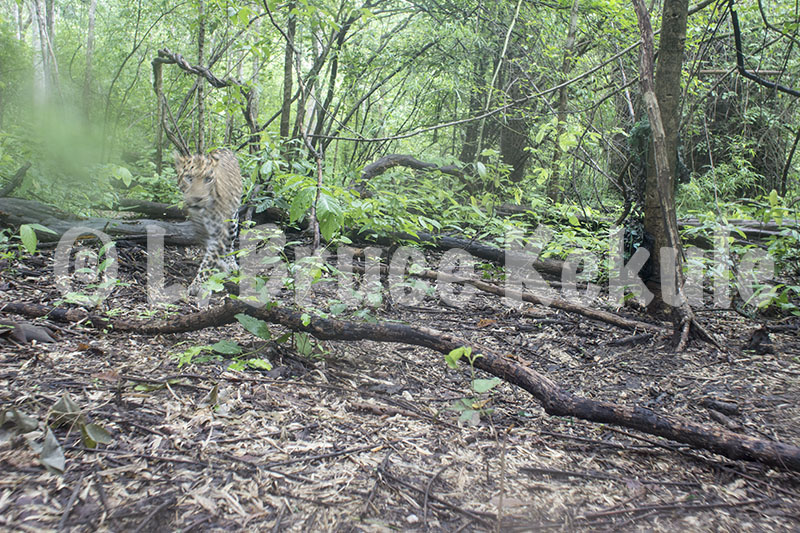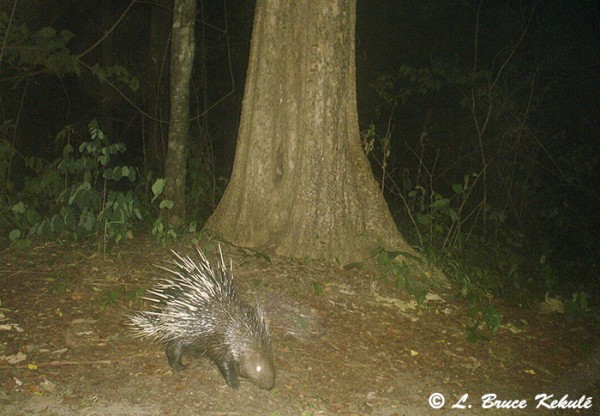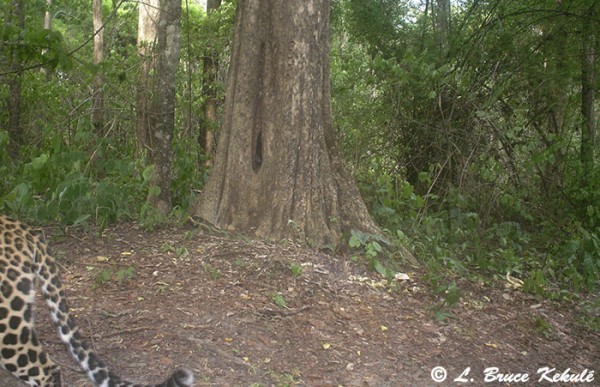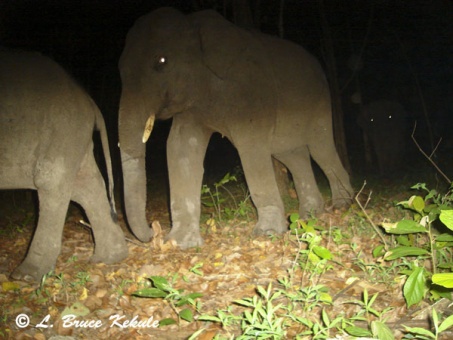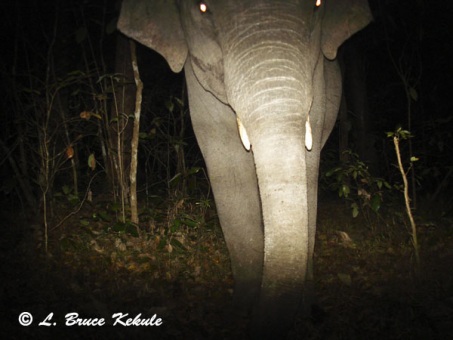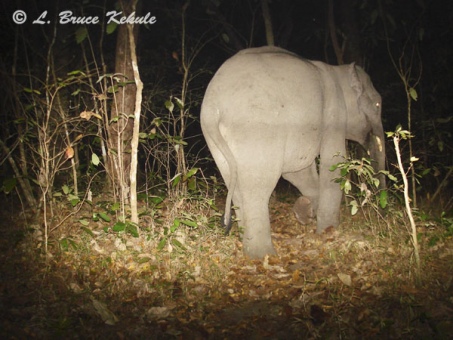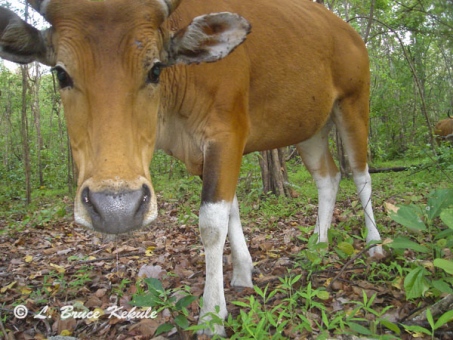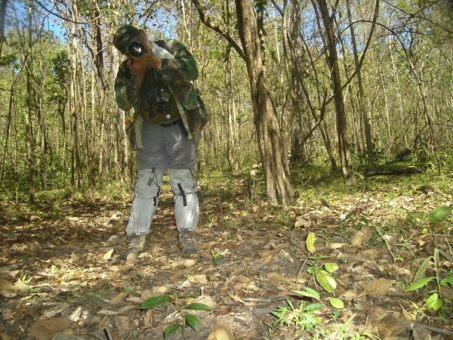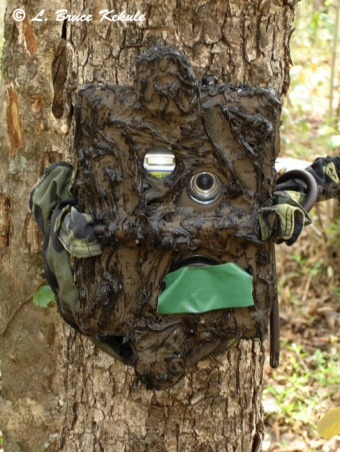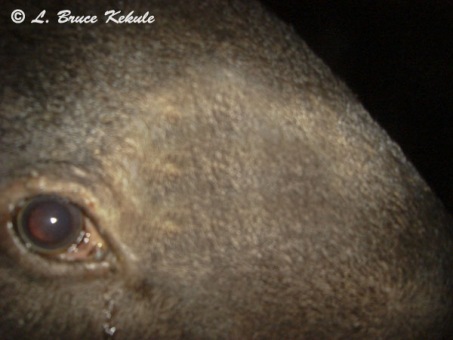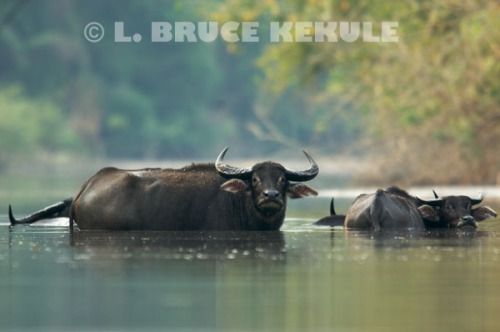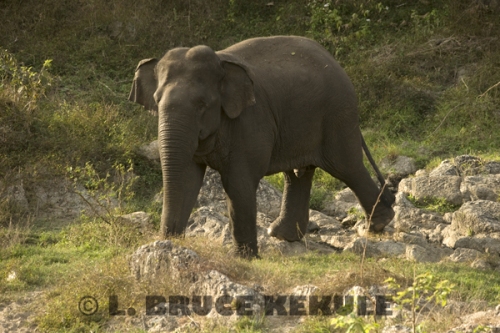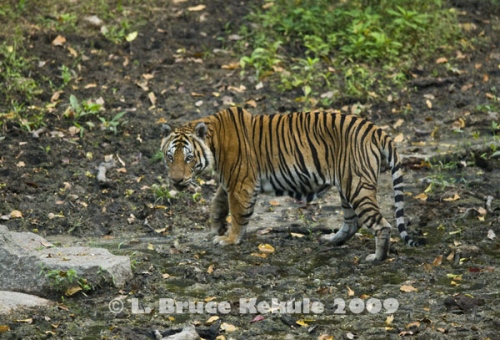Posts Tagged ‘Asian wildlife’
Botched shutter speed and focus…!
Two Asian leopards pass-by my Canon 600D
For the most part, I usually catch something interesting on my camera traps in the ‘Western Forest Complex’ of Thailand. This place is one of the last great Asian forests where rare wild cats like leopard and tiger still thrive plus many other cryptic animals like sambar, banteng, gaur and tapir living alongside the predators. It does not matter if the camera was set right or wrong. I still manage to get some good record shots of black and yellow phase leopards at this new location.
A black leopard on my birthday: May 19th at 1.49pm, exposure: 2.5 sec…a lucky catch…!
A yellow phased or spotted leopard on May 28th at 8.13am, exposure: 1/8 sec.
A spotted leopard on June 19th at 2.41pm, exposure: 0.3 sec.
A spotted leopard flashing by on May 28th, exposure: 0.6 sec.
I’m not sure how my 600D jumped from ‘Manual’ over to the ‘Tv’ setting (shutter speed priority) but the answer is obvious. I somehow moved the wheel and did not double check it before closing up the cam. So all the shots had very long exposures hence blurry and out-of-focus images. However, the proof that leopards do thrive at this location is still good news. And the bad news is:
Stolen Nikon D90 DSLR camera trap…!

My first DSLR camera trap; a Nikon D90 and SB400 flash with a Yeti’ board in a clear Plano box…!
After capturing leopards on my Canon 600D, I hated to pull it out but had no choice. When I set the Canon, I also set a Nikon D90 DSLR (shown above) in an ‘elephant proof’ box a little bit further down another well-used trail (about 100 meters away). After I checked the Canon, I went straight to the Nikon but it was gone. Someone had stolen it plus two Nikon SB-28 flashes and a SSII (Snapshotsniper) sensor. The complete rig had been taken including the ‘aluminum housings’ and all the hard-wiring. This is my third camera stolen in this ‘World Heritage Site’…!
I have no idea who it is but one thing for sure; it’s the same group that stole my Bushnell Trophy Cam video and ‘Fireman Jim’ 125 DXG video in another section of the sanctuary earlier this year. It means that someone has the special ‘power-torque’ wrench to open-up the ‘elephant proof’ housings, and a 17mm socket wrench (for the 3/8 X 3″ stainless lag bolts) to remove the aluminum boxes from the trees. The ‘power-torque’ wrench is only available at a few special tool shops in Bangkok, or it was found in the forest where I lost one awhile back. Needless to say, it’s back to the drawing board to beef up security of all my cams. I have a new design that will make it even harder to steal that I will post at a later date…!
Sony P41 trail cam catches Asian wildlife
Leopard, bear, elephant and other rare creatures caught by a home brew ‘point and shoot’ camera trap
A black-phase leopard.
As I was in the forest checking my DSLRs last month, this little area where I park my truck looked like it might be promising and most likely used by some cryptic wildlife. I decided to setup my old Sony P41/BF board/Pelican 1040 with two ‘C’ cell externals (built for me by Dave, the old owner of BFOutdoors.com).
A yellow-phase male leopard.
An Asian black bear.
The cam is encased in an ‘elephant proof’ box attached to a tree and locked down with a Python cable. I’ve had this cam since 2008 and it’s still working very well. I usually carry a few of my old ‘point-n-shoots’ in the truck in case I need to survey a new trail or location like this.
A female muntjac (barking deer).
A green peafowl.
A couple weeks later, I was back and found a whole slew of animals had come by. A black leopard was the first through followed by a yellow-phase leopard, a muntjac (barking deer) and then a black bear. Other creatures that also came were green peafowl, elephant, large Indian civet, porcupine, several smaller civets and finally the tail end shot of a leopard again in daytime.
An Asian elephant – some strange flare.
Even though some of these photos are not the best, they are a good indication of what passes through. I previously got a tiger 50 meters from here. I have already decided to set-up a DSLR across from this tree and worked out where the flash and sensor positions would go…it looks very promising….I just gotta get back there…to be continued…!
A large Indian civet.
An Asian porcupine.
The tail-end of a leopard.
Huai Kha Khaeng: A camera trap saga
Thailand’s amazing forest with some beautiful, elusive and rare Asian creatures
Huai Kha Khaeng Wildlife Sanctuary is situated in central western Thailand, and is a World Heritage Site. It is the top protected area in the Kingdom. In January 2012, I began a camera trap program to determine the status of wildlife found here. In just a short two months, all the large mammals including elephant, gaur, banteng, tapir, tiger, leopard and many others have been caught by ‘homebrew’ digital camera traps set at various mineral deposits, water holes and game trails situated in the interior of the sanctuary. I have ten trail cams working through till March 31st, 2012. These are the best series. The following photos shows this amazing biodiversity, and this place is truly worthy of its ‘World Heritage Site’ status.
Set-up Number 1: A S600/1010/SSI was set above a water hole close to a ranger station. This cam turned out the most wildlife photos over a two month period. This mineral deposit and waterhole is visited daily by many animals and is one of the best in the sanctuary.
A Sony S600/Pelican 1010/SSI in an ‘Elephant proof ‘ box with a ‘Python’ locking cable
Mature female tiger
Tiger follow-up shot
Young tusker elephant in a herd
Tusker close-up
Tusker about-face
Mature gaur bull
Mature banteng bull
Younger banteng bulls
Mature banteng cow
Banteng cow close-up
Macaque monkey
Camera trapper
Set-up Number 2: Another S600/1010/SSI was set close to the ranger station and a bag of large rotten fish heads was strung up to prevent being taken by a scavenger like a water monitor. Amazingly, a leopard and a big wild boar, both scavengers, came to the bait. The bag can be seen in the boar picture. Boy did it smell..!
S600/1010/SSI in ‘elephant proof’ box with python locking cable.
Leopard male in the stream attracted by the ‘fish head’ bait.
Wild boar hoping for some carrion.
A crab-eating mongoose in the stream after the bait had been cut down.
Set-up Number 3: An old Sony S600/1040/BFOutdoors/2 ‘C’ cell externals in an ‘elephant proof’ box and ‘Python’ locking cable with 3D camouflage was used to catch this tiger mother and her cub (also caught by Bushnell Trophy Cam video twenty meters away). Other shots collected from this cam were deer at night not included here.
Sony S600 in a Pelican 1040 and BFOutdoors board with 2 ‘C’ cell externals
Tiger mother caught close to Subkaow mineral deposit and water hole
‘Eye of a tiger’ as this young cub has a chew on the cam…remarkable shot…!
Set-up Number 4: An older S600 with a Yeticam board in a 2nd generation LBK aluminum boxed cam plus tools for installation. Tiger, tapir and a sambar stag came along this trail about a day’s walk from the ranger station I stay at. This site will be covered by long-range cams with ‘C’ and ‘D’ cell externals for a three-four month period during the rainy season.
Old 2nd generation LBK trail cam in an ‘elephant proof’
housing firmly bolted to a tree with a ‘Python cable and 2 lag bolts.
Rear-end of a tiger along a game trail
Asian tapir at night
Tapir up-close and checking out the cam
‘Eye of a tapir’….not as dramatic as a tiger’s eye..but OK for government work..!
A mature sambar stag, Thailand’s largest cervid
Note: I still have more then ten trail cams working here at the moment including my new Canon DSLR 400D with three wireless flashes, and two of my new W55s. I will also be setting up a homebrew video very soon. I surely will be posting many more camera trap photos of this truly wonderful and magical wildlife sanctuary in the near future.



